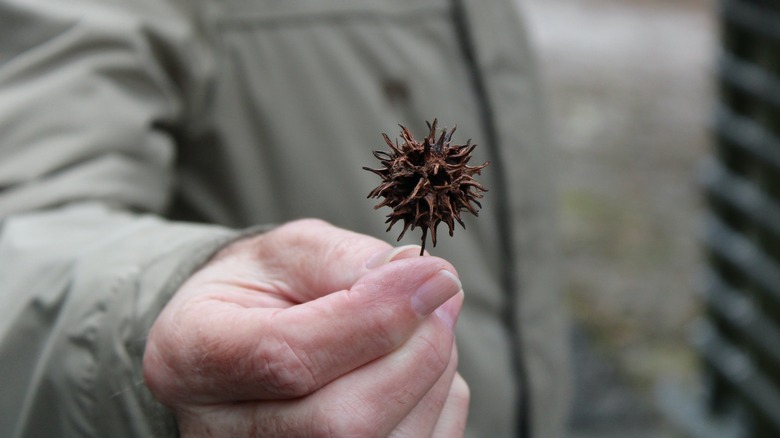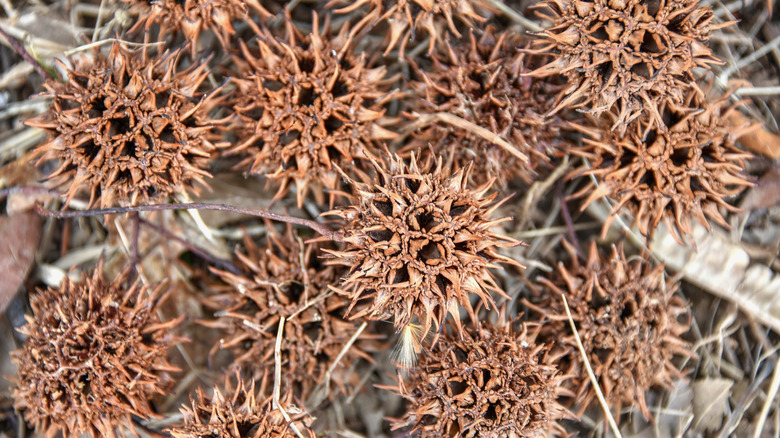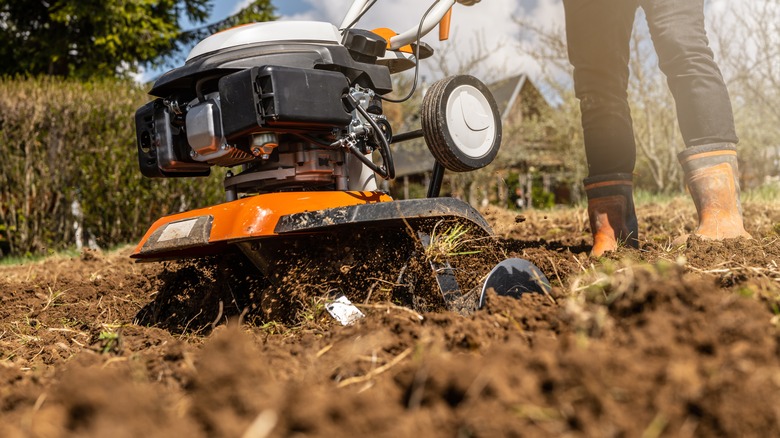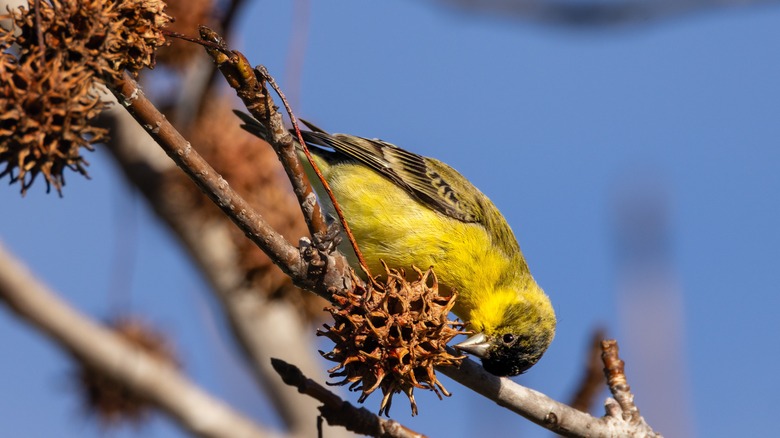Our Master Gardener Shows Clever Ways To Use Sweetgum Balls In Your Yard And Garden
If you have lived in a home with a sweetgum tree (Liquidambar styraciflua), you are probably familiar with the pros and cons of this shade tree. Ideally, they would only be planted where spiky gumballs are not a nuisance. Unfortunately, they are often placed in the home landscape where these capsules that encase the seeds fall on walkways and driveways — areas where they are not only unsightly but dangerous. I cannot tell you how many times I've nearly fallen from stepping on sweet gumballs. Although the three mature sweetgum trees in my front yard are sometimes frustrating, I have found several ways to use the spiky gumballs in my flower and vegetable gardens, including as mulch and enjoying an endless fire-starter supply.
I definitely have a love/hate relationship with these trees. The spiky gumballs fall year-round, but it's particularly overwhelming in the spring when the tree starts producing new gumballs to start this cycle all over again. After a spring storm or windy day, our previously cleared sidewalk and driveway are covered ... again. To look on the bright side of these messy but beautiful trees, they do drop their gumballs when they are most helpful to use in the garden. They also offer beautiful fall foliage and require minimal pruning once a year: in spring, which is the best time of year to prune your sweetgum tree.
Free organic mulch
The giant sweetgum trees in my front yard provide a significant amount of shade. My front landscaping consists largely of various types of hostas. I guess it's a good thing I love those plants! When I have a lot of sweetgum balls in my front yard, I like to rake them into my flowerbed, tucking them around and under the full leaves as a non-toxic way to keep slugs from damaging my hostas. The spikes on these seed capsules also keep the neighborhood cats from using my flowerbed as their litterbox, as well as deterring squirrels.
Aside from the benefits of these gumballs' spiky nature, from a distance, they just look like natural wood mulch. This saves me time, money, and energy since I don't have to buy and haul enough bags of mulch from the garden center to fill my 30-foot-long ornamental bed. Although any leaf rake will work for this, I've found metal rakes with flexible prongs to be most effective at moving sweetgum balls.
Improve garden soil
Many years ago, my grandpa planted two sweetgum trees in his front yard, one for him and one for my grandma. Once those trees matured and started dropping spiky gumballs, he used them in his garden, so these tips came from him. He would use the plethora of organic matter to improve his soil in two ways. Sometimes, he would mow over a pile of raked gumballs to break them into smaller pieces. As you might imagine, this was a somewhat messy process since the mower would throw pieces everywhere. A safer way to do this would be using a mulching mower with a bag attachment to collect the shredded gumball pieces. When he wanted to skip that step, he would just rake the gumballs into his garden space and till them into the soil, where they would break down to add organic matter. Both processes improved the condition of his dense Arkansas clay soil.
I no longer have an in-ground garden, but I like to use spiky gumballs in my planters. Before filling a new pot, I sometimes add a layer or two of gumballs to the bottom to help improve drainage. Since I plan on expanding my garden, like when I turned leftover mineral tubs into raised garden beds, I'll save a lot of my sweetgum balls to add to the bottom to help take up some space and to the top to keep critters out.
Attract birds
Perhaps the most passive benefit of having sweetgum trees in your yard is to attract birds. As an avid backyard birder, I love to see the variety of birds that enjoy picking the seeds out of those dry gumballs on the tree. I guess you could say, "My sweetgums bring all the birds to the yard." (Sorry. I couldn't help myself.) In all seriousness, with three giant trees and thousands of gumballs, each containing two seeds, it's hard to imagine how many wild birds these trees nourish.
Dry gumballs are on the tree year-round, so it is a constant source of food high above the ground, safe from cats and other predators. This food source is particularly popular in late winter when sources of wild food start to get lean. One of my favorite birds is the American goldfinch. I see a few around in the spring, but in the winter, they come in vast flocks of 100 or more birds to feast on sweetgum seeds. It's a fantastic sight.
Simple fire starting
Apparently, sweetgum trees were all the rage when my neighborhood was built in the 1950s because many of the houses still have mature trees in the front yard. My neighbors, who also have large trees, told me how useful the dry gumballs are for starting fires. They work exceptionally well as kindling in our woodstove and our outdoor firepit. Even if we don't have firewood, we sometimes rake up a big pile and add them to the firepit to keep it going. They don't make a huge flame for cooking, but it is exceptionally warm and long-lasting once the fire is established.
Even with all these uses, we have extra gumballs to deal with. Instead of bagging them and sending them to the landfill in plastic bags, we just burn them. This reduces a massive pile of dry sweetgum balls into a much more manageable amount of ash, which you can spread in the garden or grass as a dose of potassium. This process is not an appropriate practice at every type of house or in every climate, however, and you should always keep a hose handy to ensure the fire does not spread. Safety is always the priority.




